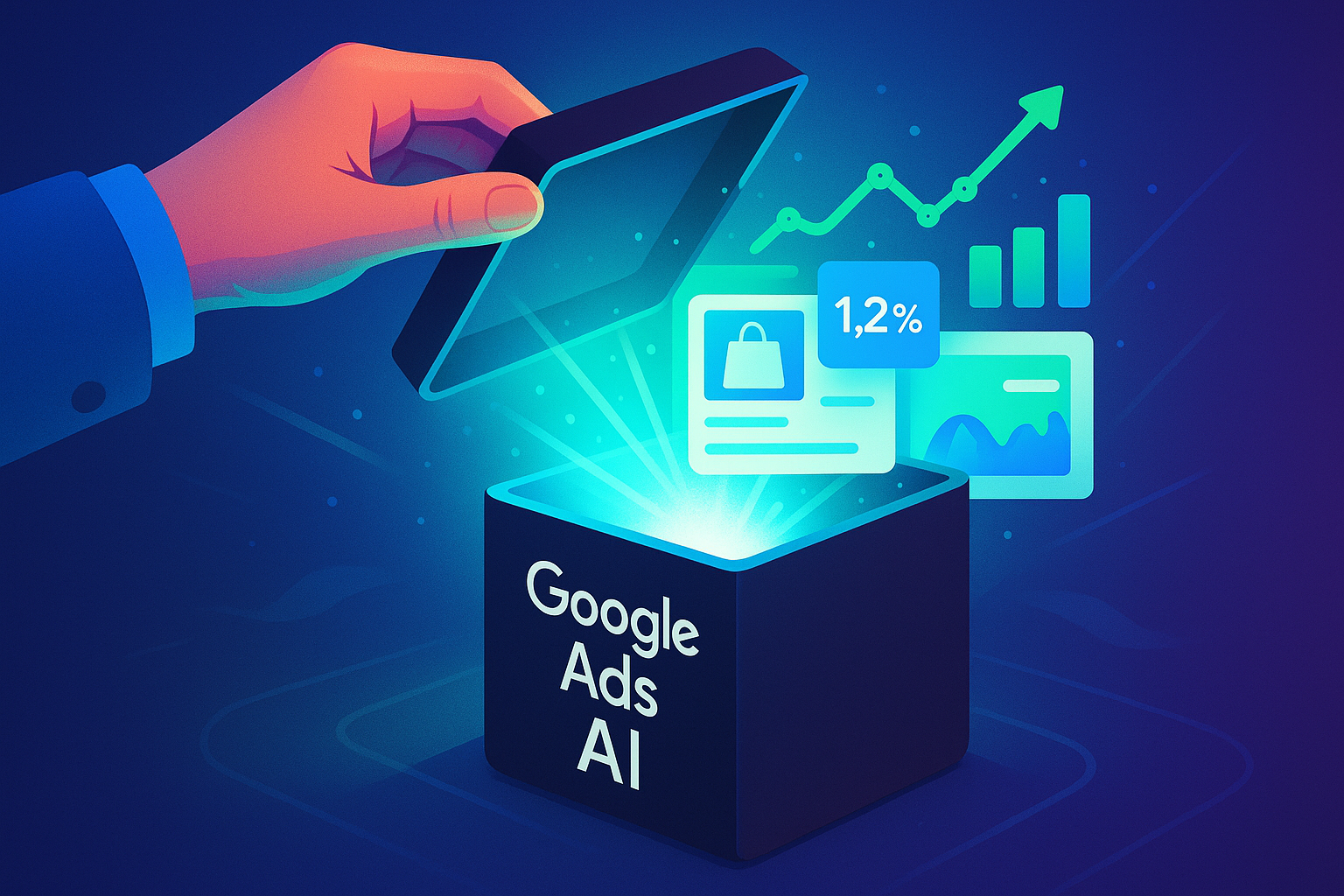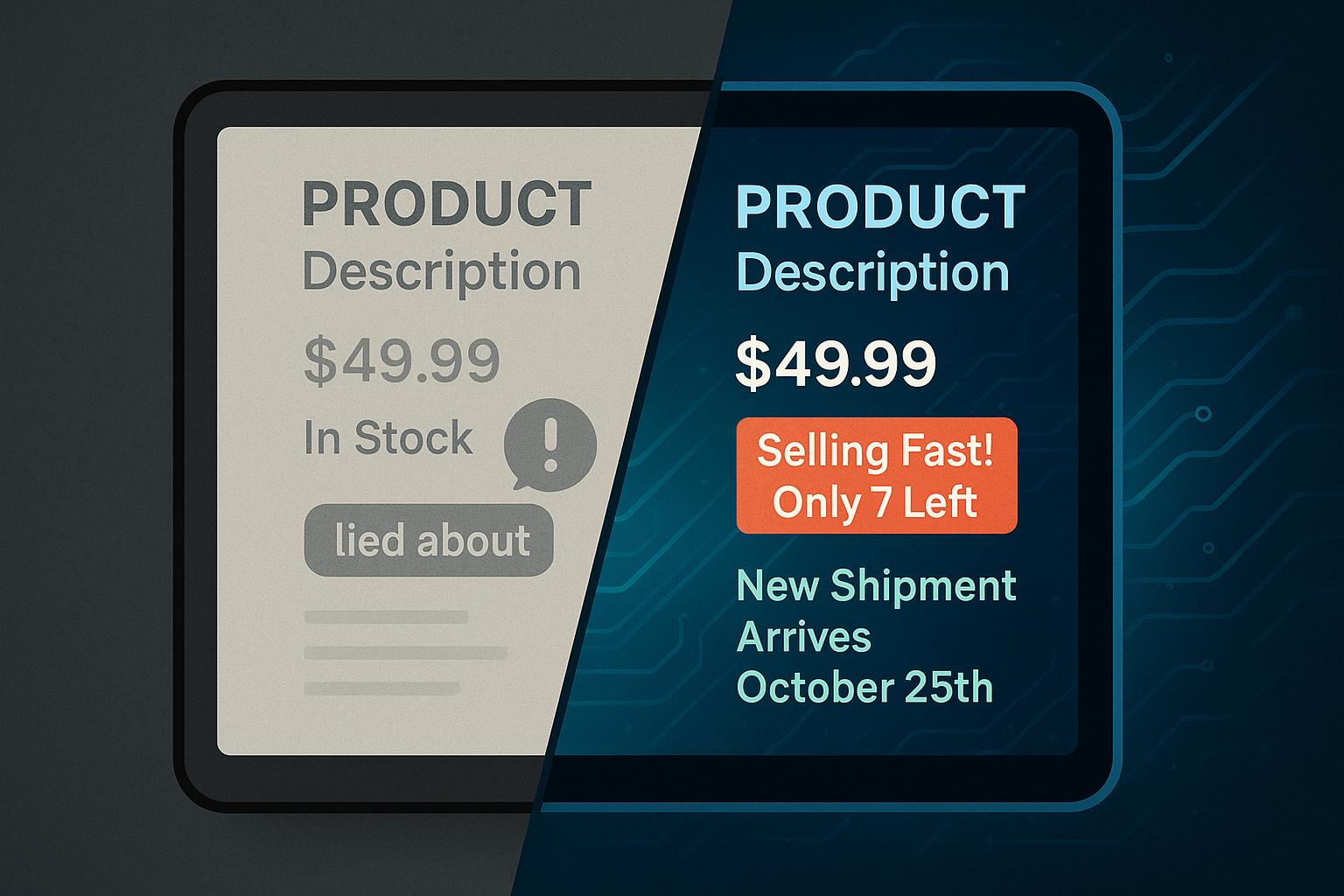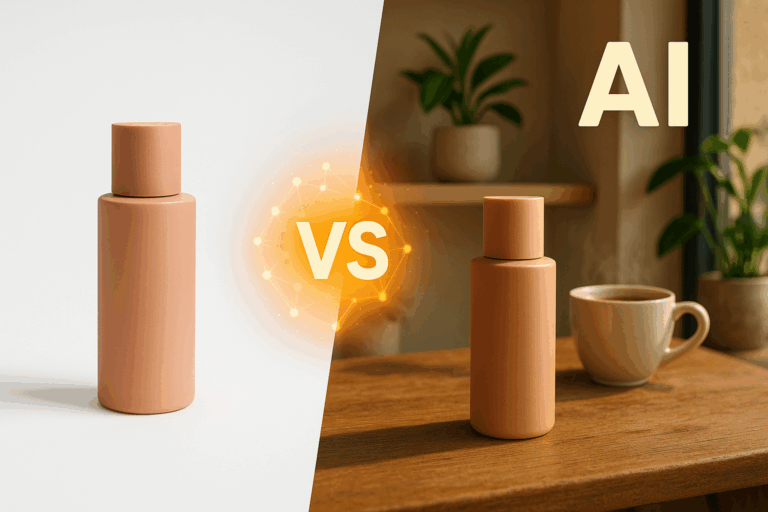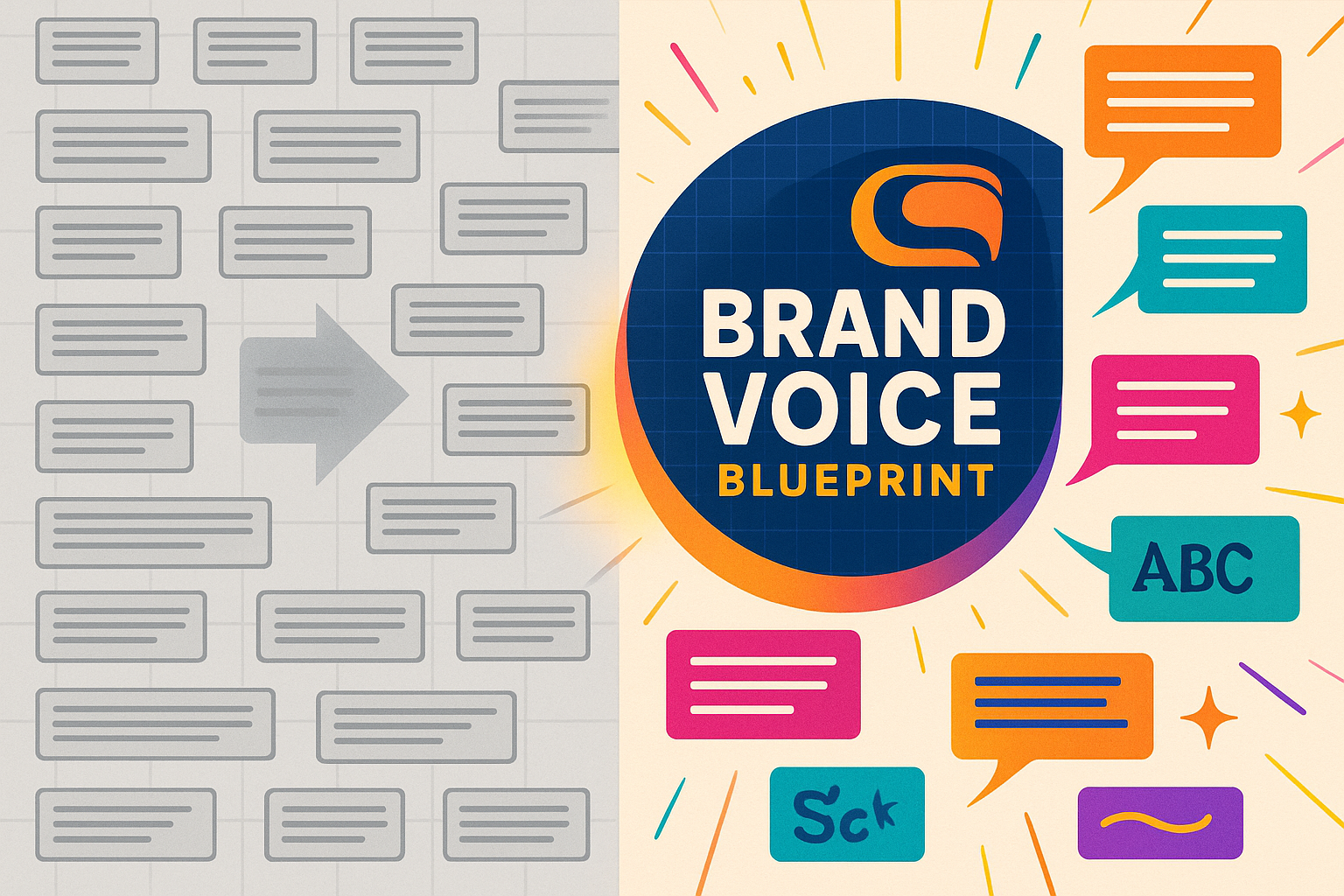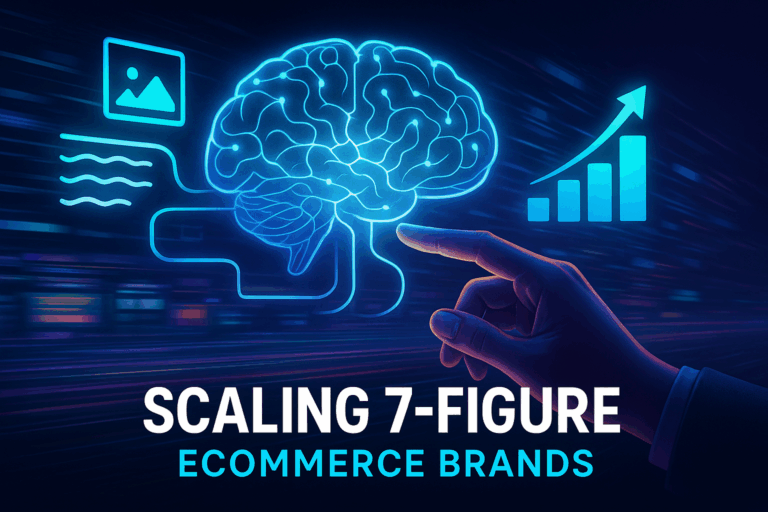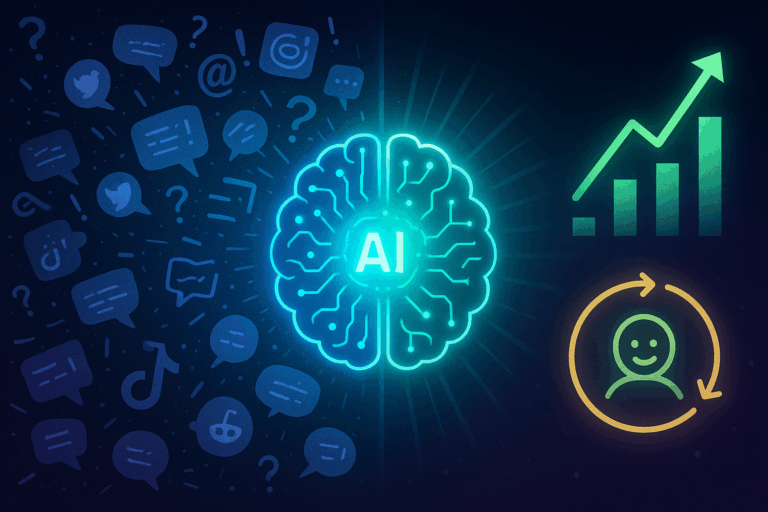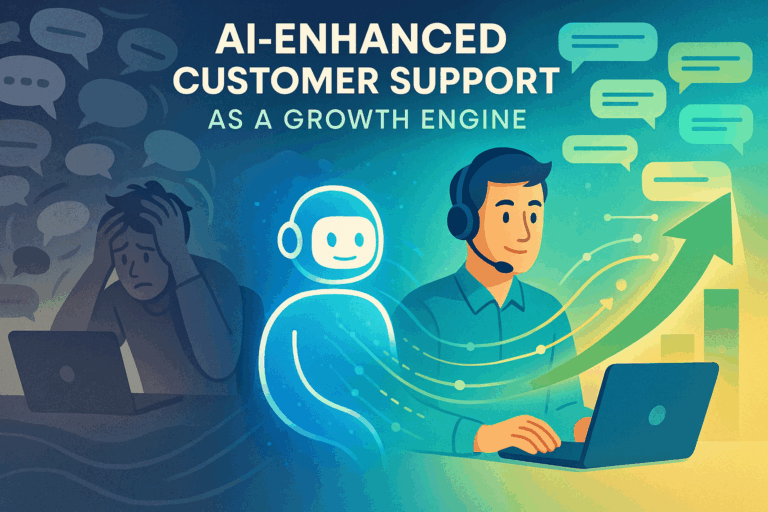You launched a new Google Ads campaign. You fed it your products, set a budget, checked the box for an AI-powered bidding strategy, and crossed your fingers.
A few weeks later, the results are… okay. Sales are coming in, but you have a nagging feeling you could be doing better.
More importantly, you have no idea why it’s working.
Which products are getting the most visibility? Which ad copy is resonating?
The AI is driving, but you’re stuck in the passenger seat with a blindfold on.
This is the new reality for many e-commerce brands. Google’s AI has become an incredibly powerful co-pilot, but relying on it blindly is the fastest way to hit a performance plateau.
The real opportunity isn’t just to use AI, but to learn how to train it.
The AI Co-Pilot in Your Google Ads Account
Before we dive into training the AI, let’s quickly demystify what it actually is.
When we talk about “AI” in Google Ads, we’re really talking about a collection of machine learning systems designed to do a few very specific things:
- Predict the likelihood of outcomes (like whether a click will turn into a conversion).
- Optimize campaigns in real time by adjusting bids, placements, and targeting based on those predictions.
- Rank and match ads to queries and audiences, deciding who shows up where and at what price.
- Assemble and test creative combinations, automatically shifting spend toward the winners.
- Allocate budget across Google’s vast inventory—Search, Shopping, YouTube, Display, Discover, Gmail—to wherever the system believes it will generate the most return.
And let’s be honest: the “most return” part isn’t purely about you. With 100 billion searches a month, Google’s AI is constantly asking: Which click is most likely to make Google (and hopefully you) money?
This predictive/optimization engine powers features like:
- Smart Bidding: Instead of setting a fixed cost-per-click (CPC), you give the AI a business goal, like a Target Cost Per Acquisition (CPA) or Target Return On Ad Spend (ROAS). The AI then adjusts your bids for every single auction to try and hit that goal.
- Responsive Search Ads (RSAs): You provide a variety of headlines and descriptions, and the AI tests different combinations to find the most effective ad for different users.
These tools are designed to automate the manual, repetitive tasks that used to consume hours of a marketer’s day. In fact, research shows businesses using automation and AI are 1.5x more likely to see a significant increase in revenue.
Performance Max: Google’s All-in-One AI Campaign
Performance Max (PMax) is the culmination of Google’s AI-first approach. It’s a goal-based campaign type that asks you for inputs—your budget, conversion goals, and creative assets (text, images, videos)—and then takes over.
PMax automatically runs your ads across Google’s entire inventory: Search, Shopping, YouTube, Display, Discover, and Gmail, constantly optimizing to find you the most customers for your budget.
On the surface, it’s a dream come true. A single campaign that does all the heavy lifting, reaching customers wherever they are. But this simplicity comes with a hidden cost.
The Transparency Problem: What You Can (and Still Can’t) See
The biggest challenge with Performance Max has always been its “black box” nature. That’s improved somewhat, but not nearly enough. Here’s where things stand today:
 You now get more insight than before:
You now get more insight than before:
- Channel performance reports show how your spend, clicks, and conversions are spread across Search, Display, YouTube, Gmail, and Discover.
- Search term reporting is rolling out, so you can see which queries triggered your ads and even add negative keywords directly in PMax.
- Asset-level reporting lets you measure impressions, clicks, and costs for individual headlines, images, and videos.
 But the blind spots are still significant:
But the blind spots are still significant:
- You cannot disable channels — if PMax wants to spend on YouTube or Display, you can’t stop it.
- Asset reports don’t tell you which channel drove those results or always connect performance clearly to conversions.
- Placement and audience-level visibility is still limited or heavily aggregated.
- Attribution logic is opaque compared to running standard Search or Shopping campaigns.
So while you’re no longer totally in the dark, you’re still far from full transparency. And without that clarity, it’s hard to build the kind of strategic insights ambitious e-commerce brands need to scale intelligently.
How to Train Google’s AI (Instead of Just Trusting It)
The most successful e-commerce advertisers don’t see Google’s AI as autopilot. They see it as a powerful but junior team member that needs clear direction and high-quality information to do its job well.
Here’s what that looks like in practice.
1. Feed It High-Quality First-Party Data
Google’s AI knows a lot about users, but very little about your actual customers. That’s where your first-party data comes in — the information you collect directly through your site and sales process.
This includes:
- Enhanced Conversions: Passing back hashed customer data (like email or phone) at the point of purchase so Google can better match ads to real buyers.
- Offline Conversions: Importing data from your CRM or sales system to show which leads eventually became high-value customers.
By feeding this data into Google Ads, you’re giving the AI a sharper picture of who your ideal customer really is, so it can go find more people like them.
This is critical — 63% of consumers now expect personalization as standard, and your data is what makes that possible.
2. Build a Feed That Teaches the Model Correctly
Your feed isn’t an accessory to the campaign — it is the campaign. In practice, that means two things we’ve talked about repeatedly:
- Ecosystem over single-channel heroics. Don’t judge feed changes by which ad unit “wins” credit in a given week. TOFU, MOFU, and BOFU work together. A change that looks “worse” in a bottom-of-funnel view might be expanding profitable discovery higher up the funnel. Evaluate impact at the system level (blended revenue, CAC/ROAS), not by whichever placement gets the last-click trophy.
- Iteration beats thrash. The real gains show up over time. Make clear, purposeful edits and give the system time to learn. Don’t churn titles, attributes, or structure reactively because last week’s report dipped. Establish a query-feedback loop: watch how people actually find you, refine to reduce irrelevant matches, and measure lift over weeks, not hours.
Bottom line: if you don’t govern the feed, you can’t govern the model. Train it patiently, read it at the ecosystem level, and let compounding improvements do the heavy lifting.
Beyond Bidding: Where AI Is Quietly Winning for Ecommerce
While bidding and campaign management get most of the attention, AI is also revolutionizing creative optimization. Tools now use AI to analyze thousands of data points to predict which combinations of images, headlines, and calls-to-action will perform best for a specific audience segment.
It’s like having a focus group of millions working 24/7 to perfect your ad creative—except this focus group also works for Google, so don’t forget whose interests are always in the mix.
This allows brands to move beyond a one-size-fits-all approach and deliver dynamically tailored ads that resonate more deeply with each user, boosting engagement and conversion rates.
Frequently Asked Questions (FAQ)
Is AI going to replace my job as a PPC manager?
No — but it is changing it. The repetitive work of manual bid edits and ad rotations is being automated. What AI can’t do is understand your margins, your funnel strategy, or your brand. Your role is shifting from day-to-day adjustments to higher-leverage work: training the AI with better data, interpreting its performance in context, and steering it toward outcomes that actually matter for the business.
What’s the difference between Smart Bidding and Performance Max?
Think of it this way: Smart Bidding is an AI feature you can apply inside campaign types you still control (like Search or Shopping). You set the targeting, ad groups, and keywords, and Smart Bidding handles the auction-time bid adjustments to hit your CPA or ROAS goals.
Performance Max also uses Smart Bidding — it’s the same bidding engine under the hood — but wraps it in a fully automated campaign type. Instead of you controlling the structure, PMax decides which channels to run on (Search, Shopping, YouTube, Display, etc.), which audiences to expand into, and which creative assets to serve.
The pitch is that PMax “wins” by pooling signals and budget across all of Google’s inventory. And sometimes that does open up incremental reach. But in many cases, what actually drives the numbers is PMax leaning heavily on remarketing audiences and branded queries — the easy wins that convert well but don’t always add true incremental growth. That’s why it can look like PMax is outperforming, when in reality it’s just capturing conversions you might have gotten anyway.
How much data do I need to use Google’s AI effectively?
There isn’t a single magic number, but the more high-quality conversion data you have, the better the AI will perform. For bidding strategies like Target CPA or Target ROAS, Google generally recommends at least 30–50 conversions in the last 30 days.
Can I trust Google’s AI to spend my budget wisely?
No. Google’s AI will always try to spend your budget, but that doesn’t mean it will hit the goals you set — sometimes not even in its own reporting. And even when it does, those “wins” often come from remarketing or branded searches that don’t drive new incremental growth.
The system doesn’t understand your margins, inventory position, or customer lifetime value. Its job is to maximize clicks and conversions on Google’s terms, not yours. That’s why human oversight is essential. Your role is to set goals in business terms, monitor where the AI is actually driving results, and step in when optimization drifts away from what really matters for your bottom line.
Your Next Step: From Automated Ads to Intelligent Strategy
Google’s AI is no longer an optional feature; it’s the core of the entire ads platform. For e-commerce brands, this presents both a massive opportunity and a potential pitfall.
The brands that will win in the coming years won’t be the ones who simply turn on AI and hope for the best. They’ll be the ones who master it—feeding it clean data, providing strategic direction, and using its power to augment (not replace) their own expertise.
And it all starts with the feed. If your feed is weak, your campaigns will always plateau. If your feed is disciplined, complete, and structured to teach the model correctly, the AI becomes more than just a black box—it becomes a compounding growth engine.
That’s the foundation of a modern generative engine optimization (GEO) strategy: preparing your brand for discovery in an AI-driven world, where feeds are the new campaigns and training the model is the new targeting.
 The next move isn’t to trust Google’s AI — it’s to train it. Start with your data, sharpen your feed, and treat every campaign as a training exercise. That’s how you move from automated ads to an intelligent, self-improving growth engine for your business.
The next move isn’t to trust Google’s AI — it’s to train it. Start with your data, sharpen your feed, and treat every campaign as a training exercise. That’s how you move from automated ads to an intelligent, self-improving growth engine for your business.
Reach out when you’re ready to get help shaping up your Google Shopping campaigns.

